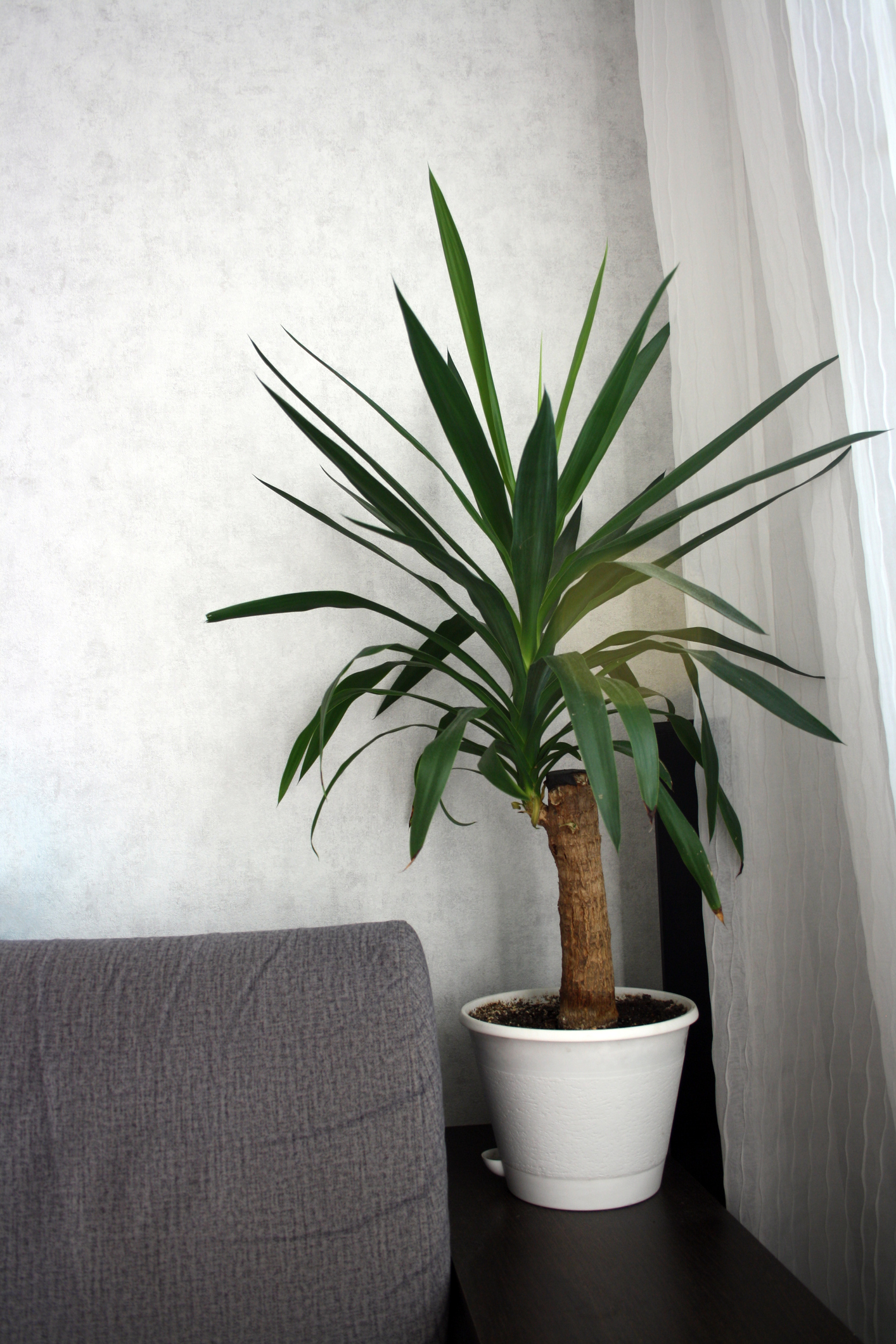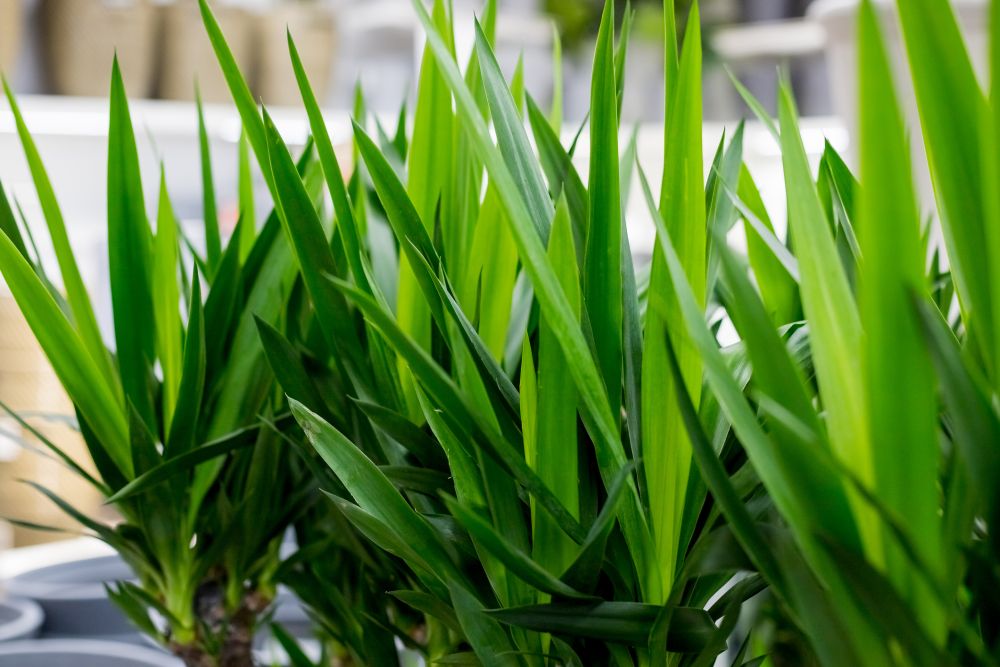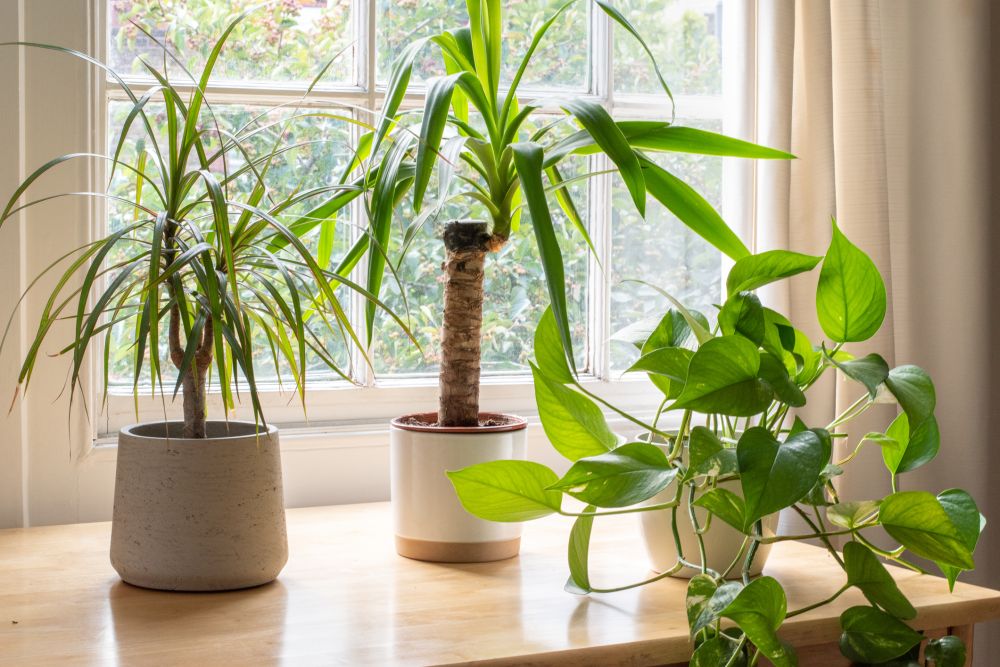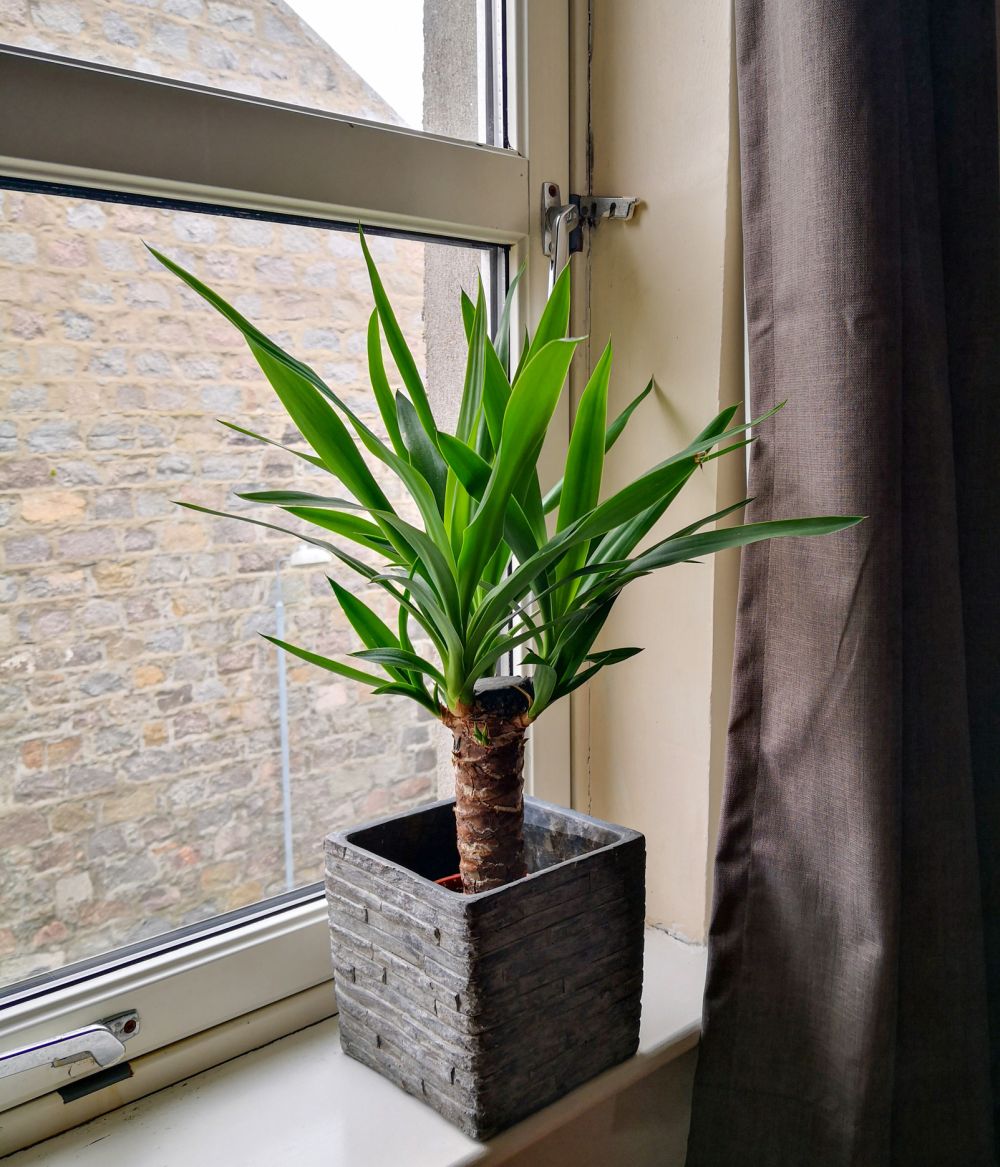How to Grow the Yucca Tree in Pots & Outdoors
Yucca trees are extremely drought-tolerant plants that fit an outdoor setting, with almost zero maintenance to thrive. They belong to the Agavoideae family and are native to the Americas. You can also trace their roots to some parts of the Caribbean. Some of the typical Yucca trees you will find in gardening stores include the Joshua tree, soft tip Yucca, Dragon Yucca, Mojave Yucca, Banana Yucca—the list long.
The tree is ranked among the most versatile plants for air cleaning. It impressively gets accustomed to weather variations and grows in different sizes depending on the species you’re looking to plant. Keep reading to learn more about growing and nurturing the Yucca tree.
Yucca Tree at a Glance
Yucca is a well-known genus with over 40 perennial plants, trees, and shrubs, but not all are the all-time favorite for gardeners. Only a handful of them—often labeled as ‘Yucca plant’—are grown as house plants or used for landscaping. They are generally slow growers, and most newbie gardeners confuse this perennial with some species in the Dracaena genus, such as the Lemon Lime. Yucca trees grow best under USDA hardiness zones 4 to 11. They tend to survive outdoors a lot longer than other tree-like perennials since they are naturally drought tolerant and are accustomed to bright sun exposure.
It’s essential to note that the hardiness zone will highly depend on the type you are looking to grow. Apart from the effects of overwatering, it’s practically hard to kill this tree. While it takes significant time for this tree to reach its maturity phase, it still develops into a giant houseplant that could fill up any idle space quite optimally. On average, most Yucca trees will get anywhere between 25 to 30 feet tall, mainly when growing outdoors. They also tend to spread about 25 feet wide, and a few offsets will burgeon on the edges of the parent plant. If you want to grow this tree indoors, it’s best to work with a spineless variety.
Yucca Tree Varieties
- Adam’s Needle (Yucca filamentosa): Native to Southeastern USA, the perennial shrub has widely been used for landscaping, and the roots have traditionally been extracted to make shampoos. The leaves also have a fibrous texture, making them an ideal material for clothing and apparel. This trunkless variety has sharp-tipped leaves, hence the name, and they can reach up to four feet tall.
- Red Yucca Plant (Hesperaloe parviflora): This Yucca type is favored because of its pinkish blooms that grow in clusters and have tall and thin spikes on the edges. It’s an evergreen perennial that blooms throughout the year and is perfect for sunny locations in your garden. You can expect it’s too blue a few lantern-like blooms during spring.
- Spineless Yucca Tree (Yucca elephantipes): The Spineless Yucca Tree can reach up to 30 inches tall. It’s no reason why most gardening stores refer to this perennial as the “Giant Yucca,” and despite its colossal size, the spineless leaves make it possible to grow the plant indoors. The Spineless Yucca plant produces white blooms during summer that could last a few months if well cared for.
- Joshua Tree Yucca (Yucca brevifolia): If you’re looking to grow a tall variety, then you want to give the Joshua tree a shot. It grows about 8 feet tall and has a thick trunk resembling that of a tree. This Yucca type is native to Southeastern US and sprouts best in USDA hardiness zones 8 to 11. When growing under optimal conditions, you’ll be lucky to see some vast white flowers during the blooming season.
Yucca Tree Caring Tips
Taking care of this flowering perennial when growing outdoors is super easy. If you are looking to have a couple of Yucca trees in your garden, you need to space them out, so they don’t desperately compete for nutrients and air circulation. But before planning on where to grow them, you need to do a little digging to have better insights on the best varieties that could survive if used for landscaping. Let’s check out some of the elementary tips you want to work with when growing and caring for this tree.
Light & Temperature
It’s common for the Yucca tree to thrive under the full sun. And when growing indoors, try placing the growing medium near a west-facing window. While in this position, the perennial house plant will receive at least 4 hours of sun rays each day. But you want to be careful not to expose it to any intense heat that would scorch the leaves. If the lighting conditions are suitable, some offshoots will grow on the edges of the parent plant. When it’s summer, it’s best to grow your Yocca tree under some shade where it can get filtered light.
Also, growing it on an outdoor space such as the balcony or patio would make perfect sense. Like most other tropical plants, this type won’t tolerate significant fluctuations in temperature levels. It will only handle slight variations, and they will help clean the air. To keep up with any changes, try to provide it with enough air circulation. It’s also worth noting that low light conditions will cause this plant not to bloom. Apart from failing to produce flowers, the response to low light environments will intensify with a decrease in leaf weight.
If you want this evergreen houseplant to have soft leaves and tissues, you want to grow it under temperatures ranging between 65 and 75 degrees Fahrenheit. Try to maintain this range, mostly if it’s growing indoors. One way to know whether your Yucca tree is struggling with excess light is signs of yellow patches on the tips of the leaves. Similar symptoms will also emerge when the soil is nitrogen-deficient. If the leaves look skinny, the entire foliage won’t look appealing, so it’s best to balance the lighting conditions. Try to maintain a consistent climate all year round, primarily if your Yucca tree is growing outdoors.
Soil Requirements
When potting this tropical houseplant, make sure the soil is porous enough to let out excess water. So, amending the potting soil with sand would help enhance the drainage process. If you are growing a low-maintenance Yucca, there won’t be a great need to use nutrient-rich soil. Other requirements, such as the soil pH, don’t matter so long as the texture allows water to pass through. As an alternative for improving drainage, you can add 1/4 perlite or pumice in the mix.
Drainage is quite essential since Yuccas grow in desert-like conditions. Make sure the soil is well aerated so the roots can get enough air circulation. Like most other tropical plants, the Yucca tree doesn’t like to stay in soggy soil for too long. Too much moisture beneath the ground will lead to a string of fungal infections, especially around the roots. You risk losing the whole plant if the root rot has spread wide and the damage seems beyond repair.
Potting & Transplanting
The overall size of the container will depend on the Yucca type you’re looking to grow. Most Yucca trees will do well in big containers. Pick one that would offer a firm base and handle the total weight, so it does not topple over. When planting your Yucca tree outdoors for landscaping, you want to plant the cuttings or offshoots at least 4 inches deep so the plant can grow and develop in a stable position. It also has to have enough space to give the roots more room for growth. Transplanting would only be necessary if the plant outgrows its original container.
Watering
As we hinted out earlier, most Yuccas are prone to soggy soil. You only need to water the soil regularly during spring and summer when there are warmer temperatures. Leave the soil to dry completely before watering your Yucca plant again. And since this tropical houseplant is overly sensitive to excess moisture, you want to make sure that it gets sufficient drainage. Reduce the watering intervals drastically during winter since the growth hormones are usually in their dormancy around this period.
While its waxy leaves don’t need too much moisture to have a vibrant appearance, the yoga tree will need to be watered a lot more often when growing outdoors for landscaping. In a nutshell, your Yuccas are drought tolerant and need moisture only when the soil feels dry. They will do just fine, even under slight neglect.
Feeding
During the growing season, feeding won’t be necessary. But if you are eager to see bright foliage and healthy stems, you want to use the proper dose of fertilizer. Feed it with a slow-release liquid fertilizer during the growing season at least once every month. Also, don’t miss following instructions on the label. Although not needful, it would be best to pick a fertilizer with iron and magnesium components that help the blooms stand boldly and impeccably. To avoid over-fertilizing, you want to work with an option that provides low volumes of each macronutrient, such as the Dyna-Gro Liquid plant food, which is ideal for perennial houseplants.
Grooming & Maintenance
There won’t be much grooming or maintenance to do. You want to pluck off any dead or damaged leaves to maintain the plant’s stature and appearance. To make it have a desired shape and size, trim your Yucca during early spring when the growth hormones are about to become active. Gently wipe off any dust using a wet and soft piece of cloth to avoid damaging the leaves.
If you are growing a stemless rosette type, you want to eliminate any dead leaves and debris that tend to settle on the base part of the growing medium. Any dirt or material settling around this area would create a perfect environment for breeding pests. When pruning, make sure to use a sterilized knife, so you don’t infect the plant with bacterial or fungal diseases.
How to Propagate the Yucca Tree
Propagating the Yucca tree is pretty effortless. And there are two viable ways to do it. First, you can use the offshoots that fall off from the mother plant and grow on the edges of the growing medium. The other option would be to use stem cuttings. It’s also worth noting that the best time for harvesting stem cuttings is around early spring when the growth hormones about to become active. All you need for that is a sharp gardening pruner or shear.
- Make a few stem cuttings at a straight angle and leave them outside to dry so the wounds can heal much faster.
- Apply some rooting hormone on the base part of each stem cutting.
- If you’re using offshoots, moisten the soil before uprooting them to reduce any friction that would damage the tissues.
- Offshoots with at least 1/4 inch of the stem have high chances of growing into mature plants.
- Get rid of any lower leaves from each stem cutting.
- Fill the growing medium with the potting mix using tips hinted out right under the soil requirements section.
- Place the growing medium in a position with enough bright but indirect light.
- Water the soil thoroughly, but avoid leaving it too soggy for a long time.
When growing outdoors, vegetative propagation would help this perennial plant to bloom since the chances are slim if grown as a houseplant.
Yucca Tree Care: Common Pests & Diseases

There are chances you might have to deal with snails and slugs, especially when you are your Yucca tree is at its tender years. One of the easiest ways to eliminate these bugs is by applying diatomaceous earth to the affected areas. Apart from overwatering, other problems could be associated with unfavorable environmental conditions or an improper care routine. Cold damage is barely reversible, so we want to keep this plant from frosting conditions, mainly when growing outdoors. Curly leaves are also a sign that you’ve used excess fertilizer.
You might also have to do best such as aphids, scale insects, and spider mites. While at their adult stage, Japanese beetles can cause excessive damage to the plant’s overall aesthetic. Spider mites are usually microscopic and are hard to spot without a magnifying glass. They tend to leave gray webs any tiny splotches on the leaves. To suppress the numbers, you can use insecticidal soap or neem oil. Pluck off any dead vegetation to keep the whole garden clean and free from the breeding of bugs.


